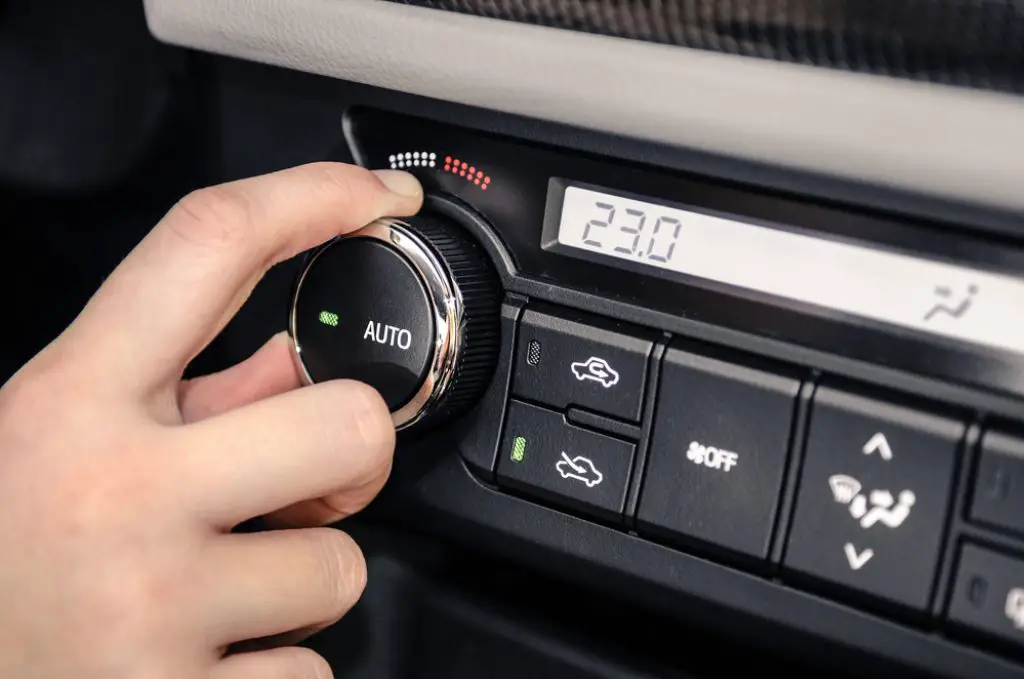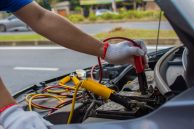We hope you love the products we recommend and just so you know that as an Amazon Associate EngineHoist.net may earn from qualifying purchases.
Winter brings a unique conundrum, a puzzle with its own set of dilemmas. Among them is the decision of when to recirculate air in car. Like many, you might be wondering if re-circulating air in the winter months is the best way to maintain a comfortable temperature. Let’s delve into this topic and equip you with the facts to make the right decision for your specific circumstances.
Your car’s climate control system plays a significant role in your comfort and health while on the road. Whether you’re aware of it or not, the choice to use the re-circulation mode can have far-reaching implications, ranging from fuel efficiency to overall car performance.
Table of Contents
The Mechanics of Air Re-circulation in Your Car
Understanding how the re-circulation mode works in your vehicle is critical. It is all about controlling the balance between outside air and the air already inside your car. In re-circulation mode, the system takes the air from the cabin and re-uses it, without pulling in fresh air from the outside.
While it may heat your car faster, the lack of fresh air can lead to other issues.
Car ventilation is an integral part of maintaining a healthy, comfortable environment, especially in the winter season. By bringing in outside air, you ensure a constant stream of oxygen, keeping the interior environment fresh and reducing the chances of your windows fogging up.
Beyond comfort, the science behind cabin temperature regulation is quite fascinating. A delicate interplay of factors – outdoor temperature, solar radiation, the car’s heating system, and your body’s warmth – all contribute to the overall temperature of your cabin.
Manipulating any one of these elements, including choosing to re-circulate the air, can tip the scales in one direction or another.

Debunking Myths: Understanding the Impact on Fuel Efficiency
Fuel consumption is a significant consideration when it comes to using your car’s re-circulation mode. A common belief is that re-circulation can lead to more fuel-efficient heating because the air being circulated is already warm.
But does re-circulation actually save you money at the pump?
The truth is somewhat nuanced. While it is true that the heating system doesn’t have to work as hard in re-circulation mode, the difference in fuel consumption is quite minimal.
Therefore, deciding between re-circulation and fresh air intake should primarily be based on other factors such as comfort, health, and car performance.
Re-circulation and Your Health – When to recirculate air in car
Using the re-circulation mode constantly can lead to potential health risks. The air in your car is filled with dust, allergens, and potentially harmful microorganisms. Continuously re-circulating this air, especially in a full vehicle, could lead to discomfort or even respiratory problems.
That said, a balanced approach is necessary. During the winter months, re-circulation can help maintain a cozy cabin temperature, making your driving experience more comfortable. The key lies in understanding when to use the re-circulation mode and when to let in fresh air.
The Impact of Re-circulation on Car Performance
Re-circulation can influence your car’s performance. Using the re-circulation mode reduces the load on your car’s heating system, leading to less strain on the engine and potentially a longer vehicle life.
However, a balance is crucial. The HVAC system, responsible for your car’s heating, ventilation, and air conditioning, may be affected by constant re-circulation.
This mode recycles the interior air that, over time, becomes increasingly filled with contaminants, such as dust and carbon dioxide from occupants’ respiration. Prolonged exposure to these contaminants may impair the HVAC system’s function.
To avoid this, ensure regular intervals of fresh air intake, especially during the winter months. Fresh air not only maintains a clear windshield, reducing fogging, but also keeps your car’s interior environment healthy and its systems functioning optimally. Knowing when to recirculate air in car is a bit of a balancing act. The use of re-circulation mode with fresh air intake is a key factor in safeguarding your car’s performance in winter.
Best Practices for Air Re-circulation During Winter
The effective use of re-circulation mode is something of an art. You need to find a balance between using it to quickly heat your car and avoiding its overuse, which could lead to discomfort or potential health risks.
Maintaining a comfortable cabin temperature is essential for a pleasant winter driving experience. Here are some expert tips: start your journey with the re-circulation mode turned on to quickly warm the cabin, and once a comfortable temperature is achieved, switch to fresh air mode periodically to prevent the air from becoming stale or stuffy.
Final Thoughts
The decision to re-circulate or not to re-circulate is not as straightforward as it may seem. You need to consider factors such as comfort, health, car performance, and fuel efficiency. Understanding these factors can empower you to make the right choice for your winter driving experience.
As we wrap up, here are the key takeaways. Use the re-circulation mode to quickly heat your car, but don’t forget to switch to fresh air mode periodically to ensure a healthy, comfortable environment. The impact on fuel efficiency is negligible, but balancing re-circulation and fresh air intake can contribute to your car’s overall performance.
Frequently Asked Questions About Car Air Re-circulation
Lastly, I’d like to answer some of your most common queries about re-circulation and winter. Whether you’re curious about the mechanics of your car’s climate control system, the impact of re-circulation on fuel efficiency, or how to balance comfort and health, I’ve got you covered. And remember, being informed is the first step to a better, more comfortable winter driving experience.








